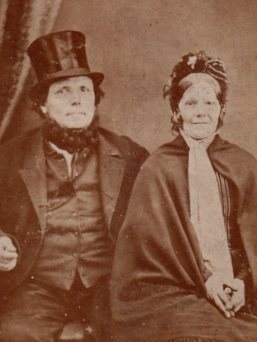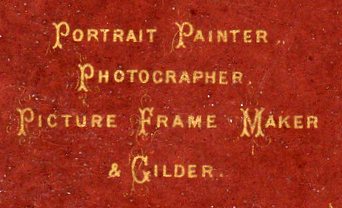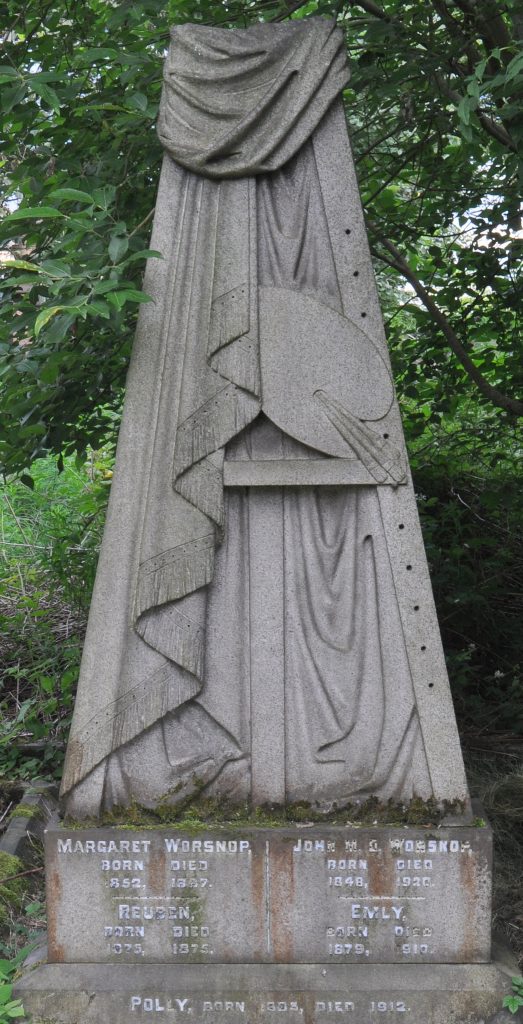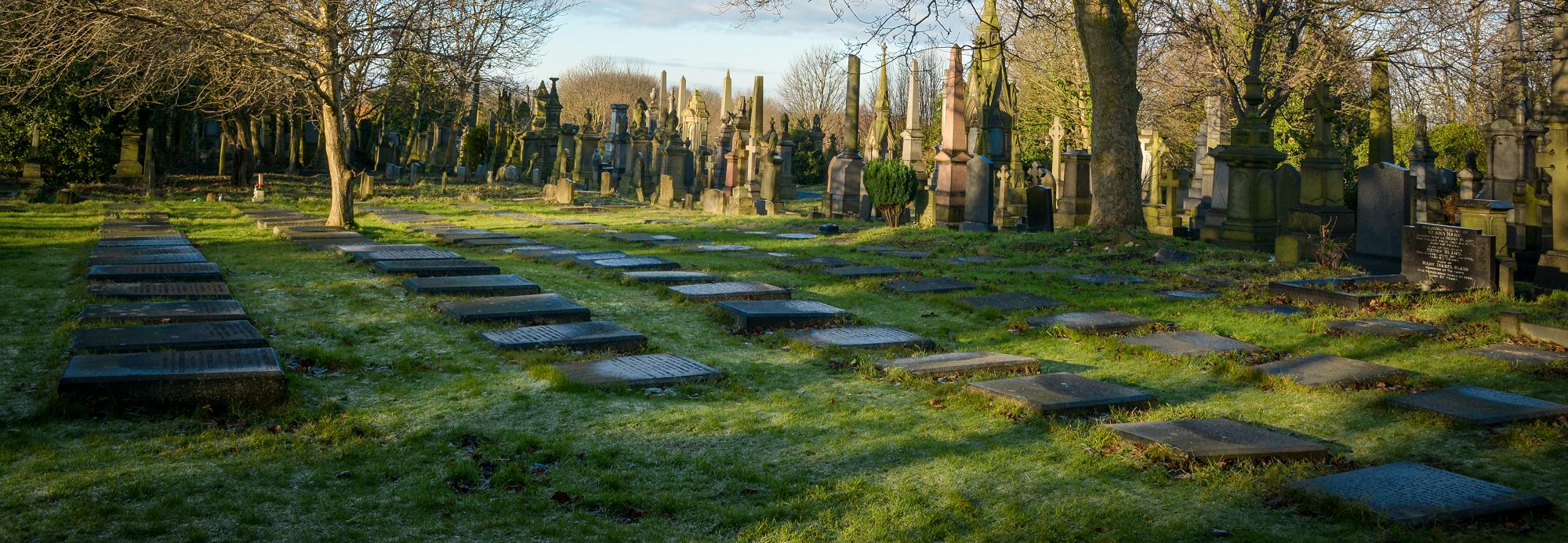John Worsnop
John Mitchell Dowling Worsnop or J M D Worsnop as he was known was born in Bradford in 1848. He established a studio in Leeds Road, Bradford in 1868 where he worked as an artist and photographer. Later in 1886 he moved to 16/18 Harris Street. Shortly after this, most probably in 1888, he had to give up his business due to failing eyesight.
John married his first wife Margaret Batley in June 1870, his occupation at the time was shown as photographer. (Wedding Banns) They had four children, Precilla Ann, Reuben, Reuben Secundus, Emily Elizabeth and Albert Worsnop. The first boy Reuben died in his first year and the following year in 1876 the couple had another son and named him Reuben Secundus, which in Latin means second or lucky. After Margaret died in 1887 John married again this time to Isabella Mc Cubbin who had been his housekeeper and together they had two children. (1911 census) both became accomplished actors, they were Bernard Worsnop who used the stage name Gerald Lawson and Wilfrid Worsnop who would be known as Wilfrid Lawson.
The photograph shown here is one of the early portraits taken by John Worsnop and below are some of the card designs that were used.



1881 census
In 1881 the Worsnop studio was at 154, Leeds Road, where all the family were also living along shop assistant Sarah Ann Shefflin. The house and shop was put up for rent in 1882 for £42, it had four bedrooms, a sitting room and two cellars. (Bradford Observer 3rd March 1882)
The case of Arthur Schofield – The Bookkeeper
John unfortunately had to place an article in the local press in January 1881 stating that Arthur Schofield was no longer in his employ, and was not authorised to accept money or transact business on his account. (Bradford Daily Telegraph 7th Jan 1881) Schofield had been keeping the books for the business but when John asked him to draw up a balance sheet he was unwilling to do so, and a confrontation took place which resulted in John being assaulted by Schofield. The case went to court. It was revealed that Schofield was acting as bookkeeper and cashier. Worsnop employed a number of canvassers to go out and find business, it seems that this may have been for painted portraits. Customers were given the option to pay for their portraits by instalments. Schofield would collect the cash and keep the books, however, one of the charges was that he fraudulently converted the cash book to his own use, in other words he had his fingers in the till ! In fact it was worse than that. Unbeknown to John, Schofield was trying to convert the business to a business of his own. At the time he was being paid 42s per week. The canvassers were each being paid 5s standing wages and 1s 8d per pound commission on the money they received.(Leeds Times 25th Jan 1881)
Challenge to the world
Oil painting for under 6 guineas Oil painting on canvas with Alambra guilt or Rosewood frame. ‘Royal portrait painter’ (Bradford Daily Telegraph 22nd Dec 1881)
Artist to their Royal Highnesses.
In 1882 the Prince and Princess of Wales visited Bradford to open the Technical School and John managed to get a photo of them being handed the keys by Sir Henry Ripley. Afterwards he sent a cabinet sized print to the Prince via Mr Forster M.P. Soon after a letter was received from Sir F. Knollys of Marlborough house stating “The Prince will be happy to accept a copy of an enlarged photograph of the Prince accepting the key from Sir Henry Ripley at the opening of the Bradford Technical Institute.” John must have been extremely pleased by this response and shortly afterwards a beautifully framed copy embellished with gold and lavender lush was sent to Marlborough House. Sir F Knolly acknowledged the receipt of the picture which had been handed to the royal highness, and by him accepted. (Leeds Times 28th Oct 1882) And so John Worsnop from thereon including in his advertising, as was customary for photographers to do, a statement that he was ‘Artist and Photographer to their Royal Highnesses The Prince and Princess of Wales’. The carte de visite shown above shows medals that John won in competitions in 1879 and 1882. It also confirms that he was promoting the business by stating that he was artist and photographer to the Prince and Princess of Wales which would have much more of an impact than just showing the medals themselves, although there were certainly something to be proud of.

John Wosnop’s failing eyesight
By 1911 John had lost his eyesight and in the census he is shown to be blind. It may be that at an early age his eyesight was failing as in 1891 he is recorded in the census as being a retired artist and in 1901 as living by his own means. A press report by the Yorkshire Post 24th October 1894 confirms as much. John was reported to have been a photographer for twenty years and had to give up his business due to his failing eyesight. The report was from a court case when he was taken to court for manufacturing a drink by the name of Fruitonic. John had started a new business to generate some income but he was not aware that he had to stamp the tin that the Fruitonic was sold in and presumably pay duty on the product. He was taken to task by the Inland Revenue. They also had an issue with his claims about the drink. He had been manufacturing the ‘concoction’ for about twelve months, it was described as a substitute for tea and coffee. The authorities sent a sample to the lab for analysis as it was being claimed that it had four times more nutriments than tea or coffee. The lab found it contained bran and sugar and it ‘was of no value for food whatsoever’. He was fined with an alternative of spending fourteen days in prison.
His sons Wilfrid and Bernard’s acting careers.
Both Wilfrid (stage name Wilfrid Lawson) and Bernard (stage name Gerald Lawson) enjoyed long acting careers. Gerald Lawson was best known for his part in St Ives, Armchair theatre, and for his part as an Irish Customer in The Mummy featuring Peter Cushing and Christopher Lee. Gerald Lawson married Queenie Barrett and their son and John Worsnop’s grandson Bernard Lawson also became an actor from a very early age, his stage name that he adopted later was Bernard Fox , he starred in popular TV series such as Hogans Heroes and Bewitched where he played the part of Dr Bombay, he even played the man in the crows nest that spotted the iceberg in a film about the Titanic. He died quite recently in Los Angeles. Wilfrid Lawson during his career appeared alongside John Wayne in The Long Voyage Home (1940) and featured as Uncle Nat in The Room at the Top which was filmed in Bradford in 1958 and released in 1959. Clips of some of the films can be found on Youtube.
When John Worsnop died in 1920 he was buried at Undercliffe Cemetery where his grave is marked with quite a distinctive headstone, it consists of artist’s easel with cloth draped over and a palette and brushes. It is clear that he or possibly his family preferred him to be remembered as an artist rather than a photographer. His first wife Margaret died in 1888 and perhaps this is when the grave was first used and may also coincide with the date John hung up his brushes due to his failing eyesight. The draped cloth may well be a sign of him reaching the end of his career as an artist and as a photographer.

You can find John Wosnop’s monument using the what3words App and website. Follow this link and select satellite view. Click Here. If you are using the App on your phone type in ports.wanted.settle in the search box.
Research by Steve Lightfoot

